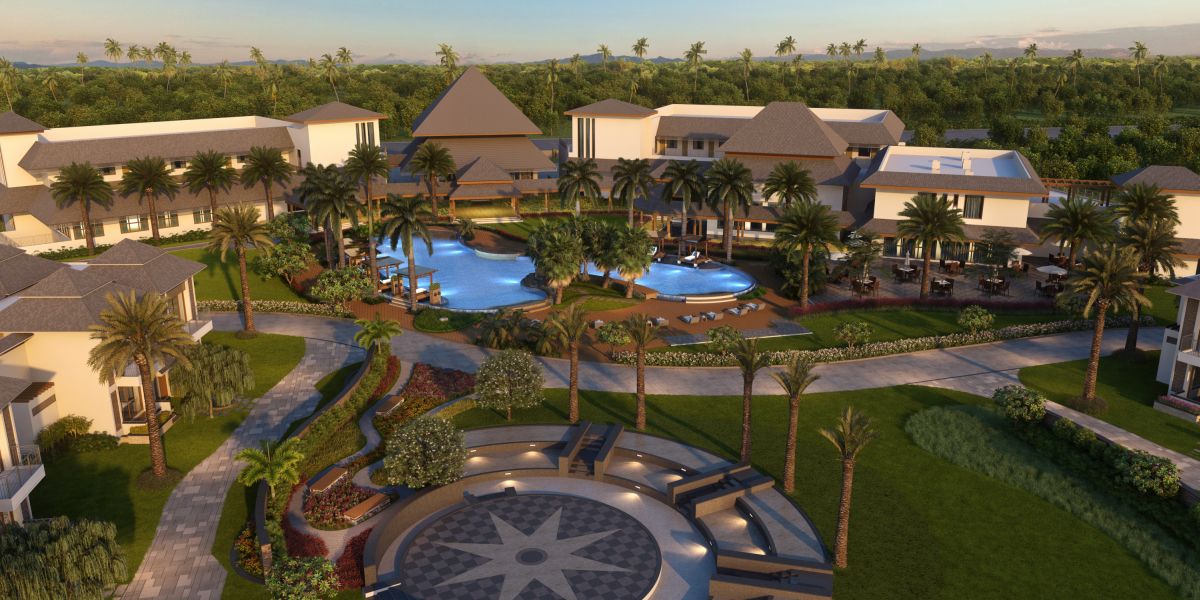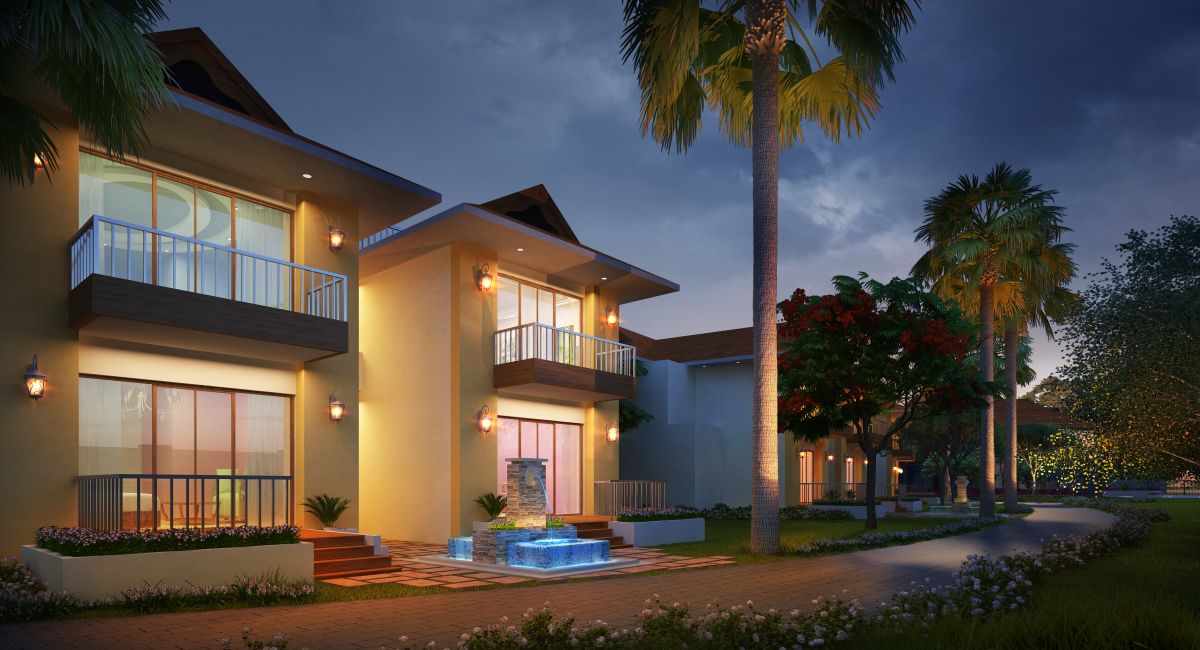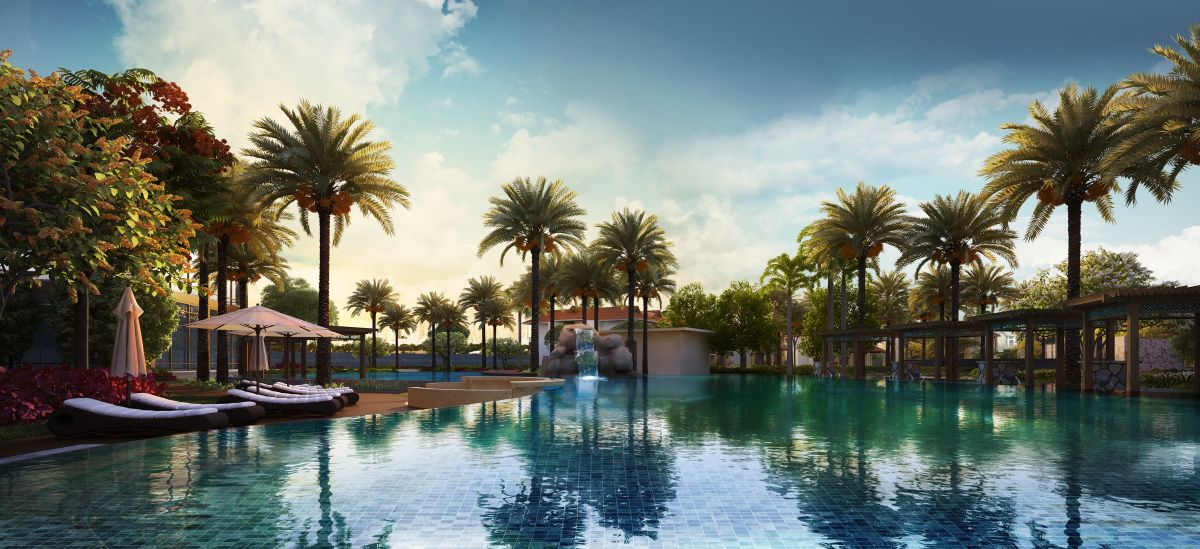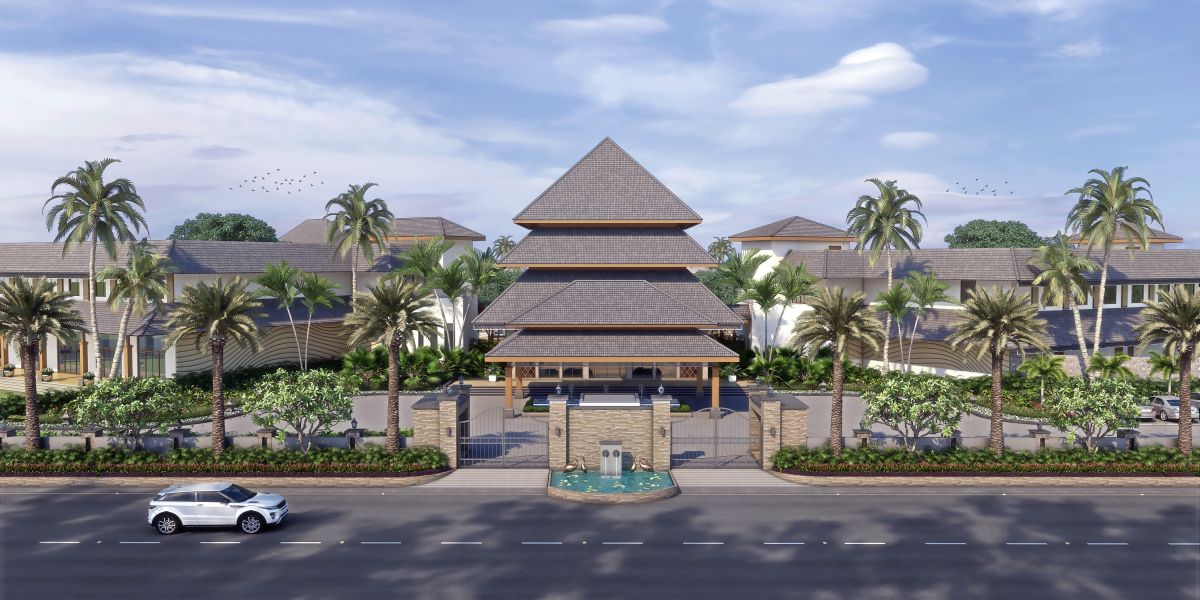 The Westin Spa & Resort is a luxury destination in the heart of the Pink City of Jaipur (Rajasthan, India). It offers a completely new experience for its guests with a plethora of facilities and interesting features.The Balinese version of the built-form is designed to enthrall the visitors with a luxurious and comfortable experience.
The Westin Spa & Resort is a luxury destination in the heart of the Pink City of Jaipur (Rajasthan, India). It offers a completely new experience for its guests with a plethora of facilities and interesting features.The Balinese version of the built-form is designed to enthrall the visitors with a luxurious and comfortable experience.
The design manifests itself in a contemporary manner, stepping away from traditional Rajasthani architecture, yet rooted in culture. The brief was to plan and design an experience- driven destination not only for tourists but also as a weekend getaway for the residents of Jaipur. It further stated that even though the resort should be a family oriented space with ample facilities and attractions for all age groups, the peace and tranquility of the place with a focus on wellness should not be compromised.
A lot of emphasis was placed on the integration of the space with the landscape with special attention to the pool and a tropical theme which would take the visitors away from their busy and hectic city lives. With climate-sensitive zoning for reducing solar heat during the summer, the resort is planned with a pool between the public and the private zone which acts as a mitigating transition between the two. Local material has been used extensively and a lot of focus is drawn towards putting together an environmentally sensitive landscape. The masterplan of the resort lays emphasis on seamlessly defining the public and the private areas while keeping in the mind the efficiency of the project.
The public areas transition into a semi-private pool facility whichunfolds into a large open space surrounded by cottages. The entire resort is dotted with recreational facilities for all age groups which are neatly tucked away along the periphery of the property.Though the emphasis of the elevation is on creating a tropical ambience, the planning principles are traditional at heart. Hence, keeping in mind the context of the local architecture of Rajasthan, locally available materials were optimally used for the project.
 A linear axis defines the visual connect from the reception pavilion to the external landscape courtyard through a water body adorned with accent elements. A peripheral golf cart facilitates ease of access to the cottages and provides guests with a choice to either explore the space on foot or the cart.
A linear axis defines the visual connect from the reception pavilion to the external landscape courtyard through a water body adorned with accent elements. A peripheral golf cart facilitates ease of access to the cottages and provides guests with a choice to either explore the space on foot or the cart.
Cottages Design
The design of the cottages follows a compact plan bound by a central courtyard and a set of 4 rooms that is accessed on 2 floors. The rooms are designed to provide privacy at both levels and an exclusive open shower facility is installed for a rejuvenating experience, reducing dependence on artificial lighting and mechanical ventilation.
Each cottage has an intimate outdoor enclosure with a full edge of glazing which organically mingles with the overall landscape, creating a well-lit and airy room for the guests.
Key sustainable features
Sustainability is greatly emphasized throughout the design of the structure. Being a solar passive design, a lot of attention has been put inthe water and air circulation of the space.A shallow water body along the public areas aides a cooler atmosphere.The roof has been carefully designed to minimize heat through solar radiation. Planned with an insulation layer underneath the roofing material, the design allows air circulation for an outflow of hot air from the edge and this natural ventilation helps in maintaining a cool temperature even in the absence of air-conditioning. The use of large overhangs and shaded pathways help in local wind patterns, facilitating the cooling of the micro-climate.
A nursery was setup on site during the entire duration of the construction. This worked as an opportunity to grow plants to reduce the heat island effect created during the construction period. A herb and vegetable garden is proposed on site that will provide fresh produce for the kitchens and the specialty restaurant.











